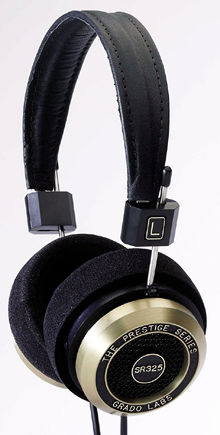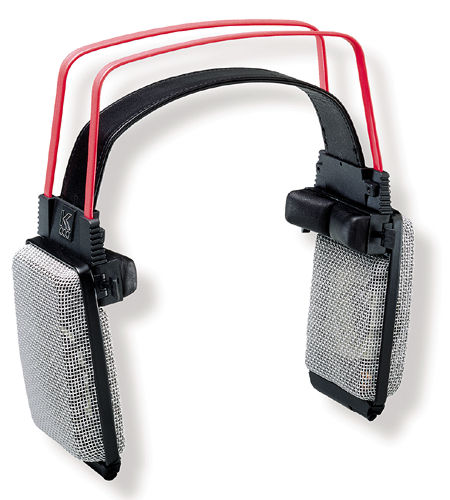| Columns Retired Columns & Blogs |
The Fifth Element #30 Page 2
Grace Design has slightly tweaked the amplifier's appearance as well. It's still one professional rack unit high, half a rack unit wide, and of enviably high-quality fit and finish. The corners of the casework are now rounded, and the front panel is somewhat busier—not surprising, in view of the added functions. The biggest visual change is the addition of a blue LED numerical-display window that shows the volume setting in 0.5dB increments. Volume and input selection are still controlled by knobs. The volume-control circuit now has four channels, so variable line output and headphone volume can be set to different levels. A vertical row of pilot lights indicates sampling frequency and datastream lock; a single LED indicates whether the cross-feed compensation is engaged. The power switch is still an illuminated PhD (Push here, Dummy) button. The power supply is internal, so there's an IEC inlet and no wall-wart transformer. The same transimpedance amplifier circuit is used in the m902 as in the 901. Interestingly, Grace offers multifunction remote control via a handsome, all-metal, infrared remote as a $125 option.
Like the 901, the m902 is built like a brick, is as quiet as a mouse, and is very relaxing to listen to. Unlike the 901, the m902 can be used as a DAC-preamplifier, not just a headphone amp. The m902 handles all digital data synchronously. It does not upconvert or resample the digital data, which means that its sample clock is synchronized to the incoming data and the original bits are not changed. Grace Design, by the way, is a sister company of digital-test-equipment maker Terrasonde, so this ain't their first rodeo, nosirree.
Grace Design's m902 impresses me as a preamplifier-DAC every bit as much as their 901 impressed me as a headphone amplifier. All my favorite demo tracks, from Ella Fitzgerald to Mahler to Mary Black, were rendered with remarkable clarity and continuity. There was a roundness of tone, especially to the midrange, that was reminiscent of some of my peak audio experiences.
Readers with long memories will recall that I preferred the 901 as a headphone amplifier when I directly compared it with the Benchmark DAC-1. The difference was not "night and day," but a matter of lushness and envelopment vs a sonic presentation that, for all its many virtues, was not as lush and enveloping. The same went for their respective line outputs.
It is precisely here that issues of cost and value come into play. At $1700, the Grace m902 costs 75% more than Benchmark's DAC-1. Is it nearly "twice as good"? Probably not, by any rational calculus. But, using an emotional calculus, can the m902 provide twice the listening pleasure and twice the pride of ownership? I'd say "yes." Highly recommended.
Even if you do not listen to headphones much at all, the m902 is a great, high-resolution DAC in a very cost-effective package. If your system can use it as a preamplifier, even more to the good. I think that the Benchmark and the Grace are each a case of getting what you pay for. With the Grace, you pay more and you get more. Of course, neither the Grace nor the Benchmark can decode DSD; if you have an SACD collection, you'll still need a dedicated SACD player.
 A six-pack of cans
A six-pack of cans
I asked Michael Grace to recommend some headphones he was happy with. He mentioned Grado's no-longer-available HP-1s, Sennheiser's HD-650s, and Austrian microphone manufacturer AKG's K-1000s.
Grado sent me their SR325s, which, at $295, fall at about the halfway point of their price range. The SR325s excelled at articulation and dynamics. Indeed, when I used the Grace m902 on a couple of busman's holidays—helping to record some local community and school music ensembles—the engineer I assisted preferred the Grado's diamond-like "clarity and cut" to the sound of the Sennheiser HD-650s. The ambient noise levels of the recording venues might have had something to do with that judgment, but even in a quiet room, the Grados gave the sense of greater treble extension than the Sennheisers. The Grados are also more efficient. I do wonder whether the SR325s' generally forward sonic presentation might get fatiguing after long listening or editing sessions. But headphone selection is an extremely personal matter. The Grados' earpieces are round; unless you have very small ears, they'll perch on your ears rather than around them.
Sennheiser's HD-650s ($549) are an evolution of their very successful HD-600 open-back dynamic headphones, which became something of a de facto mastering-industry standard. The HD-650s are claimed to provide superior results owing to hand-selected parts with closer tolerances and the use of a specially developed acoustic silk, for what the manufacturer claims is precise, uniform attenuation over the entire driver area.
Silky aptly describes the HD-650s' essential sound. Compared to the Grado SR-325s, the Sennheiser HD-650s sounded richer but slightly darker. Using the Grace m902, the HD-650s' treble was refined, in that it did not call attention to itself. Again, one or the other of these headphones is probably going to appeal to you more, based on your hearing and tastes. The Sennheisers are truly circumaural, with the earpieces a very comfortable ellipsoid shape. However, as they seal quite effectively to the sides of your head, a resonant cavity is thereby created. It doesn't seem to have any single resonance, but it does give bass that is both quite deep and a trifle indistinct.
And now for something completely different. AKG's K-1000 open-backed dynamic headphones ($1048) are fundamentally different from all others. (Bill Sommerwerck reviewed the K-1000s in March 1991; JA followed up in May 1991.) Their headband and adjustable temple-pad arrangement is designed to hold the driver cages some (variable) distance away and acoustically decoupled from your ears, so they operate as planar drivers in free space, with all the advantages of speed and transparency associated with planar drivers.
Getting bass out of such an arrangement is not easy, so AKG recommends that the K-1000s be connected directly to a power amplifier; indeed, this is how their cord comes configured. However, Grace's m902 has sufficient reserves of power to enable the K-1000s to operate at realistic but not excessive volume levels. (I soldered the flying leads to a ¼" TRS stereo headphone plug.)
The K-1000s' driver cages resemble nothing so much as sought-after vintage German microphones, as they are made from the same kind of wire mesh. The driver cages are designed to pivot from the front so they can form angles of almost 45° with the sides of your head. This enables a certain amount of control of the bass—the flatter the drivers are toward your ears, the more bass—and allows the convoluted surfaces of the pinnae (your outer ears) to fulfill their intended function of providing spatial clues. Proof of that pudding was easy: I could discern the effects of the m902's cross-feed circuit most easily through the K-1000s.

I ended up positioning the K-1000s' driver cages less than halfway in their range of travel away from the ear—about the width of my index finger. This gave a good combination of tonal balance and spatial effects. Using such guilty-pleasure pop tracks as Basia's "Time and Tide" and Alannah Myles' "Black Velvet," the K-1000s proved themselves extremely capable performers and not at all bass-shy. I heard no trace of the nasality Bill Sommerwerck mentioned back in 1991, but of course there might have been modifications in the interim.
AKG's K-1000s are glorious headphones; if you're shopping in their price tier, you should check them out. My only caveat is that, because of their unique approach to the ear/driver interface, the K-1000s provide almost no isolation from ambient sounds.
- Log in or register to post comments




































